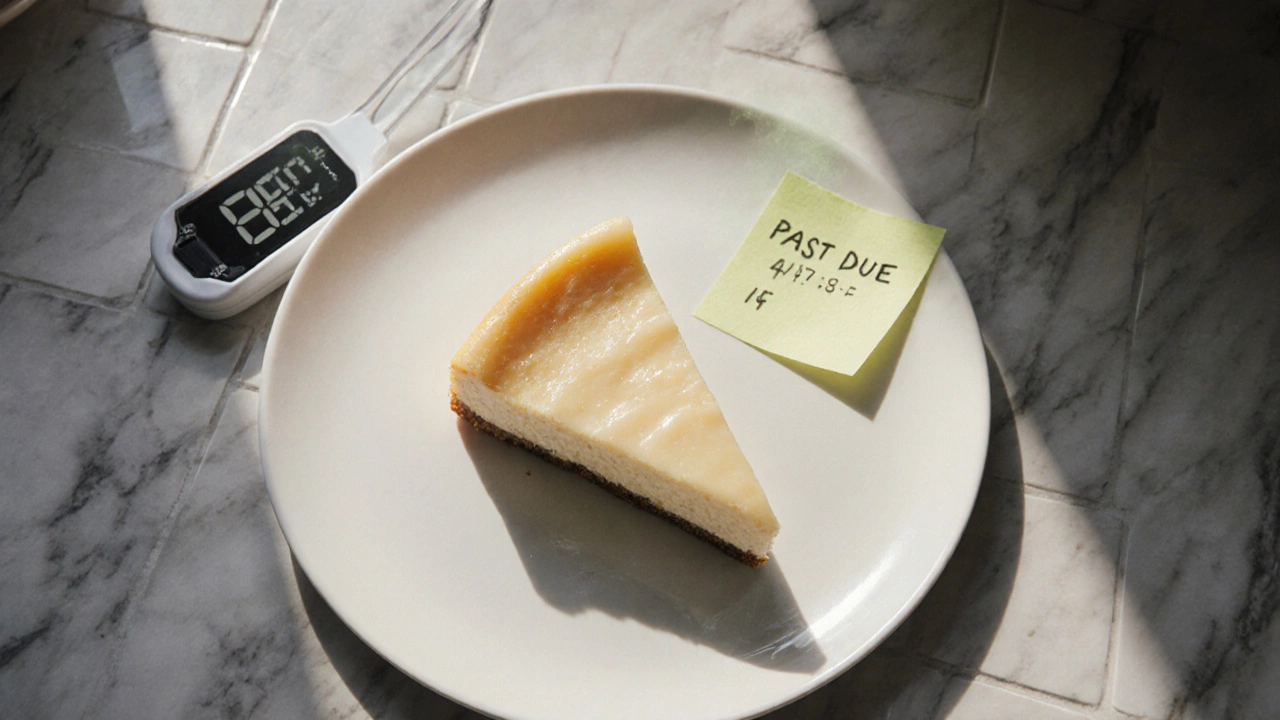
When Should You Skip That Slice? Understanding Cheesecake Safety
Learn when and why to avoid cheesecake, covering food‑safety signs, health conditions, ingredient risks, storage tips, and safe alternatives for a worry‑free dessert.
Knowing when not to eat cheesecake can keep you from stomach trouble and wasted desserts. When not to eat cheesecake refers to the specific situations where enjoying a slice could be unsafe, unappetizing, or nutritionally unwise often ties directly to how the cake is stored, what ingredients are used, and your personal digestion. Cheesecake storage covers proper cooling, refrigeration, and freezer techniques that preserve texture and prevent spoilage is a key factor, while cheesecake safety concerns the health risks from bacterial growth, mold, or excessive sugar guides the decision to skip a slice. Understanding these links helps you enjoy cheesecake without regrets.
Cheesecake storage requires consistent refrigeration because the high moisture and dairy content create a perfect breeding ground for bacteria if left at room temperature. This semantic triple – "cheesecake storage requires refrigeration" – explains why a slice left out for over two hours can become a health hazard. Shelf‑life tips, such as keeping the cake covered and storing it at 4°C (39°F) or colder, dramatically reduce the chance of foodborne illness. If you accidentally forget a cheesecake on the counter, the safest move is to discard it rather than risk a stomach upset.
Another storage pitfall is the freezer. While freezing extends shelf life, it can change texture if the cake isn’t wrapped tightly. Moisture loss leads to a grainy crumb, making the cheesecake less enjoyable. The rule of thumb: freeze for no more than a month, and always thaw slowly in the fridge to keep the texture smooth. These guidelines form the second semantic triple – "cheesecake storage influences texture" – and they directly affect whether you should eat that frozen piece later.
Beyond cold handling, the container matters. Open‑air exposure invites mold, especially on fruit‑topped cheesecakes. Using airtight containers or wrapping the cake in plastic film creates a barrier against contaminants. When you notice any off‑color, sour smell, or fuzzy growth, it’s a clear sign to skip the slice. This is where cheesecake safety steps in, forming the third semantic triple – "cheesecake safety detects spoilage".
Now, let’s talk ingredients. Cheesecake ingredients include cream cheese, sugar, eggs, and often heavy cream or sour cream, plus flavorings and toppings dictate both flavor and risk. High‑sugar desserts can spike blood glucose, which is problematic for diabetics or anyone watching their sugar intake. Additionally, raw or undercooked eggs used in some no‑bake recipes increase the chance of salmonella. The fourth semantic triple – "cheesecake ingredients impact health" – reminds readers to scrutinize recipes, especially those that skip baking.
For those with lactose intolerance or dairy allergies, the dairy‑heavy nature of traditional cheesecake is a red flag. Substituting lactose‑free cream cheese or using plant‑based alternatives can make a big difference, but you still need to check labels for hidden dairy additives. This connects to the fifth semantic triple – "cheesecake ingredients affect digestion" – highlighting that ingredient choices dictate whether a slice will be tolerable.
Digestive concerns don’t stop at ingredients. Cheesecake digestion refers to how the body processes the rich fats, sugars, and proteins found in the dessert can be slow, especially after a heavy meal. Eating cheesecake on an empty stomach or late at night often leads to discomfort, indigestion, or heartburn. Listening to your body’s signals – such as feeling overly full or experiencing acid reflux – signals that it’s time to pause the indulgence.
Special occasions also bring timing issues. Serving cheesecake at a summer picnic without immediate refrigeration can quickly turn a delight into a danger zone. In outdoor settings, use insulated coolers and ice packs, and plan to keep the cake chilled until serving. If the ambient temperature is above 20°C (68°F) for more than an hour, the safest call is to store the cake back in a fridge or discard it.
Another scenario to watch: leftovers. Many home bakers think reheating a slice in the microwave revives it, but heating can encourage bacterial growth if the cake isn’t heated uniformly. Instead, let the slice come to room temperature gradually, or enjoy it chilled – the texture is actually better that way.
Remember, portion size matters too. Even when the cheesecake is fresh and safely stored, over‑indulgence can cause a sugar crash or a feeling of sluggishness. One to two small servings are usually enough to satisfy a craving without overwhelming your system.
In short, knowing when not to eat cheesecake means checking storage conditions, ingredient lists, personal health factors, and timing. Armed with these insights, you can decide confidently whether a slice is worth the pleasure or better left untouched. Below, you’ll find a curated selection of articles that dive deeper into storage tricks, ingredient swaps, safety checks, and digestion tips, giving you all the tools you need to enjoy cheesecake responsibly.

Learn when and why to avoid cheesecake, covering food‑safety signs, health conditions, ingredient risks, storage tips, and safe alternatives for a worry‑free dessert.